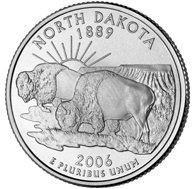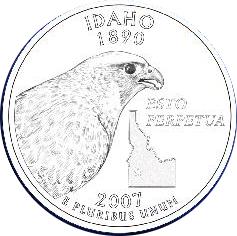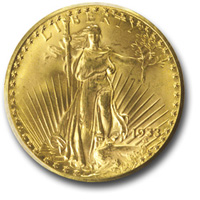Rep. Jim Kolbe, R-Ariz., introduced legislation, H.R. 5818, July 18 designed to revolutionize the way that American money is made by the government. The timing of the introduction of the “Currency Overhaul for an Industrious Nation (COIN) Act” is hardly coincidental.
The following day, on July 19, the Subcommittee on Domestic and International Monetary Policy, Trade, and Technology, had already scheduled a hearing entitled, “Coin and Currency Issues Facing Congress: Can We Still Afford Money?”
Kolbe’s impetus for moving forward is the cost of producing the cent. “This year it will cost more than one cent – 1.4 cents to be exact – to manufacture a penny,” he posited. His answer: “a comprehensive bill that not only addresses the skyrocketing production costs of the penny, but also includes other provisions that reform our coinage and currency system.”
Among the key features: the Mint and Bureau of Engraving and Printing would move from Treasury Department jurisdiction to the Federal Reserve. The $2 Federal Reserve Note would be redesigned and issued with commemorative themes; cash transactions would be rounded, eliminating the economic need for a one-cent coin; and seigniorage would be reclassified in the budget process.
Also, the BEP would be required to continue making $1 bills – at least until there were two billion $1 coins in circulation during two consecutive years; the BEP and Mint would be transferred to the Federal Reserve, paper for U.S. paper currency would have to be manufactured domestically.
In addition, older $1 coins would be declared obsolete (but remain a legal tender) and six new state quarters would be authorized for 2009 – one for Washington, D.C., and the other for five American insular territories: Puerto Rico, Guam, American Samoa, American Virgin Islands and Northern Mariana Islands. Two of them are self-governing commonwealths.
All of that is the starting point for Kolbe, an 11-term 64-year-old member of Congress who is the sixth-ranking member of the Appropriations Committee and long-time student of coinage issues. A number of the issues raised in the Kolbe bill, a draft of which was received the weekend before its introduction, have been put forth by him before.
In one sense, some issues are pay-back time.
For example, in 1998, Associated Press reporter Karen Gullo quoted Kolbe on the subject of paper money, which is a competitor of a $1 coin; most experts say the only way that a $1 coin will succeed is to eliminate its paper counterpart, where two-thirds of currency paper now goes to.
“Common sense tells you that we’d get a better deal if we had competition,” said Kolbe, then chairman of the House Appropriations subcommittee that oversees the Treasury’s budget. “This is not like making F-16 jets – there are plenty of other suppliers.”
Crane Paper was the only American company outfitted to make the specialized paper, which by law must be made in the United States. In recent years, other companies have rarely bid on contracts.
Company Chairman Lansing Crane said the Dalton, Mass.-based company has won its contracts, including one worth $75 million that expired in 1999 by providing a superior product at a reasonable price. He conceded the company’s profit margins on currency paper, ranging in recent years from 11 percent to 20 percent, seem high for a government contractor.
But Crane said the price is fair because the company has invested hundreds of millions of dollars in specialized equipment, including machinery, computers and lasers, for use in transforming bits of old blue jeans and other cotton and linen into extra-strong paper with unique security features.
Kolbe and Crane have been at odds before. Kolbe, who represents a copper-mining state, is a longtime advocate of replacing the $1 bill with a coin. Crane has lobbied against the $1 coin. This Bill protects the buy-American provision, but gives a decided edge to the success of the copper-based $1 coin. Arizona is the leading producer of copper in the United States, responsible for 65 percent of total U.S. mine production.
The state quarter addition, to make a 56-state coin set, gives recognition to a promise made by numerous Republican legislators in 1997 and 1998 when it came time to pass the 50-state coin program.
What Congress repeatedly has failed to do as of yet, and Kolbe wants to rectify it, is extend the program to include the District of Columbia and five territories as original state quarter backers promised.
The most recent failure to enact this, in 2004, six GOP members opposed the measure: Rep. John Boehner, Ohio; Porter Goss, Fla.; Gary Miller, Calif.; Ron Paul, Texas; Edward Royce, Calif.; and Bob Schaffer, Colo.
Boehner – now House Majority leader who succeeded Rep. Tom DeLay, commented that “none are states and they should not be treated as such,” adding that the remedy he would have is to require them to apply for statehood.
Miller said through his press secretary that “they are not states” and that he wanted the program kept “to the 50 states.” Paul said through a spokesman that there were “too many coins to collect” and that he had constitutional objections to the issuance of these additional pieces.
Kolbe’s bill is a model stand-alone without reference to the state coinage program, presumably to get around Boehner’s objections. If any of the mentioned political entities actually become states before 2009, they jump ahead and back into the 50-state quarter program.
The rounding portion of the bill brings up an issue that Kolbe has raised before.
“Since there has been so much attention given to this issue, let me explain in more detail the rounding system I am proposing to reduce the use of the penny,” Kolbe said in 2001. “The penny would continue to be legal tender, but would not be necessary in cash transactions. The total value of any cash transaction would be rounded up or down so that no pennies would be required.” He uses the term. “penny” colloquially since it is really a cent.
“Again, let me stress that the rounding would be applied to the total transaction costs, after taxes, and only for cash transactions,” Kolbe said.
A problematic element is that the Kolbe bill makes clear that even if the cent is obsolete, it will remain a legal tender.
If production costs continue to remain above face value, elimination of the cent from circulating coinage in the 214th year after it was first created is a real possibility. Prior studies have always concluded that the cent had a number of drawbacks, but the fact that it made a profit for the government always became the last word. With that profit now gone, perhaps a new paradigm has emerged.
Section 6 of the bill calls for “Study on alternative metal compositions for circulating coins.” The Comptroller General would be required to conduct a study on the “feasibility, practicality, and cost-effectiveness” of using alternative metal compositions for circulating United States coins.
This would include a study of the metal compositions of coins produced and issued by other countries and economic unions and the minting practices of such countries and unions; and an analysis of the costs to consumers and business that may result from any changes in the metal composition of United States coin, including transition costs, and the methods available for timing any such transition to minimize such costs.
There’s a timing issue to make sure it gets done: Before the end of the 270-day period beginning on the date of the enactment, the Comptroller General shall submit a report to the Congress on the findings and conclusions with respect to the study conducted together with such recommendations for legislative or administration action.
It will mark the fifth or sixth time that studies have been done for U.S. coinage since the 1960s.
The Federal Reserve System distributes coins and currency to depository institutions, identifies counterfeit currency, and replaces currency unfit for circulation. Putting it in charge of the Mint and the Bureau of Engraving and Printing has a certain logic to it.
Future investment decisions in plant and equipment for the Mint depends in large measure on whether it continues to produce billions of cents per year. The same kind of decisions made by the Bureau of Engraving and Printing will be influenced by whether there remains a need to continue to print $1 Federal Reserve Notes.
While BEP could produce all remaining denomination notes at the Fort Worth facility if the $1 note were discontinued, BEP officials said this would not be desirable in view of the possibility of a catastrophe occurring at Fort Worth. BEP officials would like to continue having a facility in the Washington, D.C., area as a backup.
Where the Kolbe bill goes is anyone’s guess, but mine is that he intends it to become law as his swan song, since he has announced that this is his 11th and last term. Expect action-packed days ahead.
(via Numismatic News)


